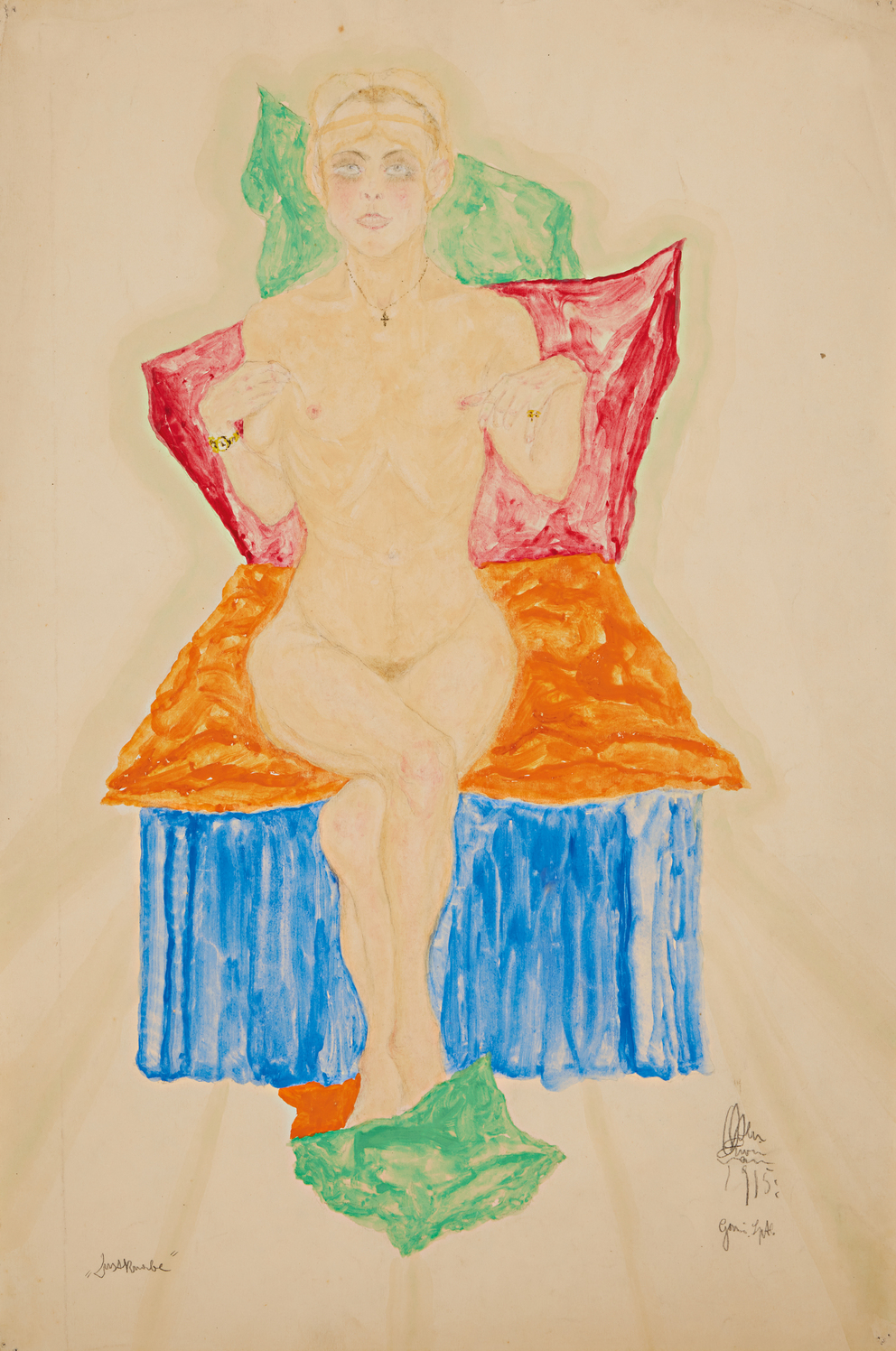Like his other portraits of patients, Erwin Osen (1891–1970) created this drawing in the spring of 1915 in the neurological ward of Vienna’s 2nd Garrison Hospital, where he himself was treated as an inpatient for “chronic neurasthenia” for several weeks. The diagnosis neurasthenia or “weak nerves” was frequently connected to discourses about the effemination of men, which were aggravated during World War I by the association of strong nerves with heterosexual masculinity. In the context of militarization and national interests, armies were trying to impose a “masculine” sexual identity – homosexuality or transsexuality were not tolerated. We do not know the name of the soldier whom Osen depicted and designated as a
Catamite, but his (self-)presentation suggests that he was expelled from the army, pathologized and treated as an “inverted” patient.
As in his
Portrait of a Patient in a black cloak, Osen is not satisfied with removing the clinical milieu, but rather replaces it with a splendid collection of pillows in bright colors, thus transforming the hospital setting into something completely different – something queer. Even though the circumstances in which it was created remain unclear, we can say that the work
Catamite offered an opportunity to address the issues of a patient portrait in a completely different, more experimental manner. With its stage-like composition, its colors, fractures and ambiguities, the drawing defies the all-encompassing regime of the hospital that enabled its creation.
VG, 2022




